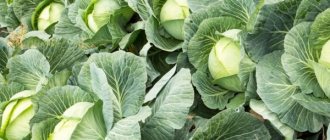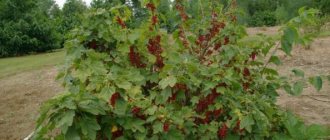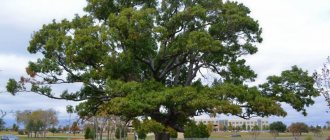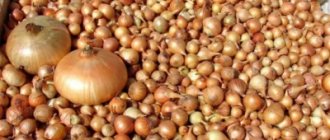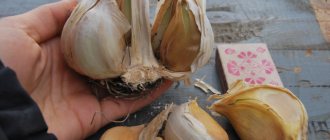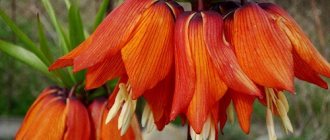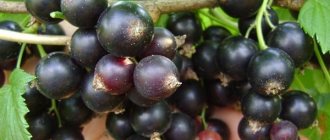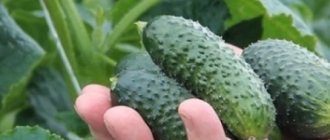Description of the cucumber variety Marinda F1
Cucumber Marinda F1 is an early-ripening, unpretentious hybrid. Harvesting occurs a month after seed germination. The cucumber crop forms a powerful, low-climbing bush with a female type of flowering. The variety does not need pollinators to set greens. With regular care, 5-7 cucumbers appear in each node.
Cucumber Marinda F1 is a high-yielding hybrid, from 1 sq. m, up to 3 buckets of harvest are removed. The fruits can be used in fresh salads, used for pickling and preparing salads for the winter.
Thanks to immunity to diseases and unstable climatic conditions, care for Marinda cucumbers is reduced to a minimum.
Description of the hybrid
Marinda is an early-ripening cucumber hybrid created by the Dutch company Monsanto at the end of the 20th century . The crop is intended for cultivation in open and closed ground, suitable for planting in the Central and Central Black Earth regions of Russia.
The plant has a female type of flowering, branches weakly, and does not need pollination. The leaves are heart-shaped, medium-sized, colored light green. The main stems are creeping vines. They end with tendrils with which the bushes cling to supports.
The culture is distinguished by a bunched appearance of ovaries: 5–8 fruits are formed on one node.
Gherkin-type cucumbers, cylindrical in shape with miniature seed chambers. Covered with dark green, lumpy skin with white spines.
Reference! The hybrid was included in the State Register of Seeds of the Russian Federation in 1994.
Distinctive features
Marinda f1 differs from other varieties of cucumbers:
- high productivity;
- the ability to form fruits without pollen;
- excellent commercial qualities of the crop;
- innate resistance to diseases;
- short growing season;
- high content of iodine, potassium and fiber in fruits.
Composition and properties
The fruits of the hybrid have a rich chemical composition, including:
- fiber;
- organic acids;
- vitamins E, C, K, PP;
- beta-carotene;
- B vitamins (pyridoxine, biotin, thiamine, choline, pantothenic and folic acids, riboflavin);
- macroelements (potassium, chlorine, phosphorus, magnesium, calcium, silicon, sulfur, sodium);
- trace elements (selenium, zinc, boron, aluminum, iodine, fluorine, iron, chromium, manganese).
Nutritional value of cucumbers per 100 g:
- calorie content - 13 kcal;
- proteins - 0.7 g;
- carbohydrates - 2.5 g;
- fats - 0 g.
Benefits of Marinda fruits:
- replenish water balance;
- eliminate heartburn;
- cleanse the body of toxins, toxins and heavy metal salts;
- normalize digestive processes;
- prevent the deposition of fatty tissue;
- reduce cholesterol levels;
- normalize blood pressure;
- relieve gum inflammation;
- improve the condition of the skin;
- relieve pain from gout, arthritis;
- heal joints;
- reduce the concentration of uric acid;
- regulate kidney function;
- improve memory;
- strengthen the nervous system.
Attention! A few fresh cucumbers will help get rid of a hangover. They will remove toxins and alcohol metabolites from the body.
Characteristics
The main characteristics of the hybrid are presented in the table:
| Bushes |
|
| Fruit |
|
| Ripening time | 40–55 days |
| Productivity | 25–30 kg/m2 |
| Suitable growing regions | Central and Central Black Earth |
| Pulp characteristics |
|
| Purpose of fruits | Used:
Used in folk medicine and home cosmetology. |
Pros and cons of the Marinda F1 variety
Marinda cucumbers, like any hybrid, have their positive and negative qualities. According to gardeners, the Marinda F1 cucumber variety has many advantages:
- early ripening;
- self-pollinating;
- forms 7 gherkins in one node;
- high and stable yield;
- universal application;
- adaptability to all climatic conditions;
- immunity to diseases.
Many gardeners have found a small disadvantage in the Marinda cucumber - the variety quickly outgrows, so timely harvesting is necessary.
Important! The plant is unpretentious and can grow under film cover in regions with an unstable climate.
In order not to make a mistake in choosing, it is not enough to know the advantages and disadvantages; you need to read the description and photo of the Marinda F1 cucumber variety.
Advantages of the variety
The main advantages of the Marind hybrid include:
- early fruit ripening;
- beautiful appearance of greens;
- high productivity;
- excellent taste of Marinda cucumber;
- the versatility of the collected fruits;
- growing bushes do not require special care;
- can quickly adapt to different climatic conditions;
- high resistance to most diseases.
The disadvantages of this hybrid include:
- the variety can be affected by the following diseases: anthracnose, downy mildew, angular spot;
- if the harvest is not harvested on time, the greens may outgrow;
- the hybrid can be affected by some pests.
Optimal growing conditions
To obtain a good harvest, Marinda F1 cucumbers are planted on light, fertile soil with a low nitrogen content. The beds are located in a sunny area, well protected from drafts. To increase productivity, you can add sawdust or rotted compost to the soil when digging.
The best temperature for growth and development is 22-26 degrees. At temperatures below 14 and above 40 degrees, the Marinda cucumber stops growing and sheds its ovaries, which significantly affects the yield.
Growing cucumbers Marinda F1
Hybrid Marinda F1 is an unpretentious crop. But to get the long-awaited result, you must follow the rules of cultivation and care. Cucumbers can be grown in open and closed beds, through seedlings and directly with seeds planted in a prepared place.
Direct planting in open ground
Most gardeners are accustomed to growing cucumbers through seedlings, but when growing in regions with a warm climate, you can sow the seeds directly into open ground.
Marinda cucumbers are sown in open beds in several stages. This method will increase the fruiting period and protect against sudden return of frost. Sowing is carried out from mid-May to early June, after the soil has warmed up.
For better germination, planting material is prepared before sowing. To do this, it is heated for 2 hours at a temperature of +60 degrees, and then soaked overnight in the solution:
- potassium permanganate – 2 g;
- potassium nitrate – 1 tsp;
- superphosphate – 5 g;
- water – 1 l.
In the prepared bed, furrows are made 2 cm deep, at intervals of half a meter. Dried Marinda cucumber seeds are placed in rows at a distance of 4 cm from each other, covered with loose soil, humus or peat. If the soil is dry, water it generously before sowing. Under favorable conditions, cucumber seedlings appear on days 5-7.
Advice! To make the seeds grow faster, the bed is covered with non-woven white material.
Growing by seedlings
Planting Marinda cucumbers through seedlings makes it possible to harvest the first harvest 3-5 days earlier. To grow healthy and strong seedlings, you need:
- Process the seed and prepare the soil substrate.
- Nutrient soil for Marinda cucumbers can be purchased at the store, or you can mix it yourself.
- To do this, add 20 g of ammonium nitrate to the sawdust and leave for at least 2 days. Then peat and 10 g of potassium are added.
- Everything is mixed and left for 2 weeks, during which time the soil will be evenly enriched with mineral fertilizers. Peat and sawdust are taken in a ratio of 7:3.
- Peat cups are filled with the prepared substrate and then spilled.
- Prepared cucumber seeds are buried 1 cm in moist soil and sprinkled with nutritious soil.
- The containers are covered with glass or polyethylene to create a greenhouse effect and placed in a warm, bright place. After the sprouts appear, the shelter is removed.
- A week before planting in a permanent place, Marinda cucumbers are hardened.
- To do this, the container with seedlings is taken out into the fresh air, increasing the residence time every day. A day before planting, seedlings are watered generously.
- Transplantation of Marinda cucumbers is carried out on a sunny day, when 3-4 leaves are formed on the plant. In open ground - at a stable temperature of + 20 degrees, in a greenhouse - in the middle or end of May.
- Since the variety forms a powerful bush, the distance between cucumber seedlings should be at least 30 cm.
The planted cucumbers are watered, mulched and tied to a trellis. Caring for Marinda cucumbers is easy. It consists of abundant watering, fertilizing, loosening the soil and forming a bush.
Watering and fertilizing
Irrigation of cucumbers is carried out in cloudy weather or after sunset exclusively with settled, warm water. During the season, the Marinda F1 hybrid is watered as follows:
- before the formation of flower ovaries. In hot weather, daily watering is carried out at a rate of 1 liter per plant;
- In the process of setting greens, the frequency of watering is reduced, but the volume is increased. Per sq. m use a bucket of water;
- from mid-August, watering is reduced. It is enough to spill half a liter of water under the bush.
Watering is done by jet, trying not to wash away the root system. Sprinkling can only be done in the evening, when the heat subsides and the sun sets.
If the weather is cloudy and rainy, reduce watering. Otherwise, the liquid will begin to stagnate, which can lead to rotting of the roots and death of the plant.
Marinda F1 cucumbers grow well in fertile soil. To harvest a generous harvest, cucumber bushes need regular feeding.
- The first is applied to increase the green mass, but if the cucumbers are planted in fertile soil, then fertilizers are not applied. Nutrient deficiencies can be detected by the appearance of the seedlings. If it is thin, weak and does not develop well, then use complex fertilizers: dilute 20 g of ammophosphate in a bucket of warm water and mix thoroughly until the granules are completely dissolved. You can also use organic matter; to do this, dilute 1 part of manure with 20 parts of water.
- The second - during flowering. To do this, use a mineral mixture: add 20 g of potassium nitrate, 250 g of ash, 30 g of ammonium nitrate and 40 g of superphosphate to a bucket of water.
- To increase productivity, this solution is effective: add 25 g of potassium nitrate, 50 g of urea and tbsp to a bucket of water. wood ash.
- Foliar feeding prepared from 10 liters of water and 15 g of urea will help prolong the fruiting of cucumbers.
Important! Foliar feeding should not be carried out in bright sun, as the solution can cause burns on the leaves.
Formation
The yield depends on the correct formation of the bush. Since Marinda F1 cucumbers are a parthenocarpic variety and the greens grow on the main stem, shaping the bush is necessary.
Pinching is carried out when 5-6 leaves appear on the plant. The first 4 leaves, shoots from the axils, flowers and greens must be removed so that the plant can devote all its energy to the development of the main stem.
Rules for forming a Marinda cucumber:
- after the 6th leaf, side shoots 20 cm long are left;
- shoots from 9 to 12 leaves are pinched at a height of 40 cm;
- Half-meter shoots are left from 15-20 leaves;
- when the top reaches its maximum length, it is pinched or carefully thrown over the trellis and directed downwards.
A properly formed bush will spend nutrients not on growing green mass, but on flowering and the formation of cucumbers.
To properly grow the parthenocarpic hybrid of Marinda cucumbers, you need to read reviews and view photos.
Landing
There are two methods of planting: seedlings and seeds. Both options are described in detail below.
Seedlings
- Before planting, germinate the cucumber seeds (put the seeds on damp gauze on a saucer, cover with glass. After 3 days, the seeds will begin to germinate).
- Fill special seedling containers with peat sawdust mixture (ratio 2:1) or ready-made soil mixture for growing vegetables (soil humidity should be 85%, temperature 25° C).
- Plant seeds to a depth of 1.5 cm in March-May.
- Cover with film.
- After emergence (on the fifth day), reduce the temperature from 25° C to 18° C, at night to 14° C.
- Water moderately.
- The seedlings are ready for planting in the ground a month after germination.
- A week before planting, begin to harden the seedlings - take containers with plants outside for several hours every day.
- Plant according to the pattern 50 by 30 cm, depth 3–4 cm. Before planting, add organic matter to the beds - 1 bucket of compost or rotted manure per 1 square meter. m., pour 1 liter of water into each hole.
It is better to grow cucumber seedlings in separate containers.
Stretched cucumber seedlings are a sign that the plants do not have enough light. In this case, you need to install artificial light sources.
Seeds
In heated greenhouses and when planting late, you can plant seeds in open ground (the ground temperature should be at least 15 ° C). The depth of the hole is 3–4 cm, the pattern is 50 by 30 cm. The crops need to be protected from the night cold with film.
Diseases and pests
From the description it is clear that the Marinda F1 cucumber has strong immunity to many diseases, such as:
- cladosporiosis;
- mosaic;
- scab;
- leaf spotting.
But if not properly cared for, the Marinda cucumber can be attacked by aphids and the following diseases:
- Downy mildew - the disease can be detected by the foliage. Brown and yellow spots appear on it. Without treatment, the leaf plate begins to dry out, the whip is affected, and the cucumbers become tasteless and deformed. To save the plant, spray with preparations: “Planriz”, “Efal-Aliette”. To prevent the disease, cucumbers are fertilized with phosphorus-potassium fertilizer, pre-sowing treatment is carried out and crop rotation is observed.
- Anthracnose - the first symptoms can be recognized even at the seedling stage. The root collar becomes covered with brown spots, the leaf blade turns yellow. Having planted a diseased plant, the disease can quickly spread to neighboring bushes, affecting greenery, leaves and shoots. You can cure the plant by watering it at the root with Bordeaux mixture or Abiga-Pik, diluted strictly according to the instructions. Treatment is carried out several times a week. Also, to prevent the fungus from spreading, damaged leaves and shoots are removed and burned.
- Aphids - appear in July-August. The insect feeds on the sap of the plant, which leads to its death. When infected, the leaf blade curls and the ovaries begin to fall off. To get rid of the insect, the bush is sprayed with an infusion of tobacco dust, garlic or wood ash.
Care
Cold protection
Cucumbers are a heat-loving crop. For their normal development and good fruiting, a temperature of 23° C is required. Temperatures below 15° C stop plant growth. Therefore, in central Russia, it is better to grow this crop in a greenhouse or greenhouse under a film that needs to be used to cover the vegetables at night.
Cucumbers need to be protected from the night cold
Weeding and loosening
You need to loosen the cucumber bed once a week. Also make sure there are no weeds. They should be pulled out carefully, preferably from damp soil, since the root system of cucumbers is not very deep and you can pull out the vegetable along with the weeds.
Watering
Cucumbers require a lot of water, especially during fruit formation. Watering should be done every week before flowering and every fourth day during fruiting. In hot weather - even more often. Quantity - from 10 to 20 liters per 1 sq. m. Be sure to use warm water, since cold water promotes the development of root rot. To help moisture penetrate the ground better, you can make punctures with a pitchfork in several places. Water should fall on the soil, not on the leaves.
Video: how to water cucumbers correctly
Feeding
3-4 feedings per season are necessary. The first is at the beginning of flowering of cucumbers: 1 teaspoon of urea, 1 teaspoon of potassium sulfate, 1 teaspoon of superphosphate, a glass of mullein per 10 liters of water. The following with an interval of 1.5–2 weeks: 1 teaspoon of potassium sulfate, half a liter of mullein per 10 liters of water (water 5 liters of solution per 1 sq. m.) or 10 g of urea per bucket of warm water.
Mineral fertilizers will help compensate for the lack of certain elements. The cucumber plant itself will tell you which ones. When there is a nitrogen deficiency, the leaves turn pale green. With a lack of potassium, a pale border appears on the foliage, and the ovaries begin to rot. If phosphorus is needed, then the flowers are small, the leaves have a grayish tint. Lack of boron leads to ugly cucumbers.
Video: simple tips for increasing your cucumber harvest
Productivity
Cucumber Marinda F1 is a high-yielding hybrid; with timely care, up to 3 buckets of harvest can be harvested from the bush. To increase yield, gherkins are removed several times a day. Cucumbers begin to be harvested 50 days after sprouts appear, in the morning or evening. The fruits are separated from the stalk with a sharp tool, being careful not to damage the lashes. Fresh cucumbers are not stored for a long time, so with a large harvest it is better to carry out timely pickling or canning.
Advice! To keep Marinda cucumbers fresh for up to a month, they are placed in a plastic bag, covered with a damp cloth and stored in a cool room. When storing, the bag must be open.
Harvest and storage
The fruits of the Marinda variety are in demand at different stages of formation. The ovary, 3-5 cm long (pickles), is usually used for preservation and pickling. Gherkins (fruits up to 8 cm long) are very popular and are convenient to preserve. Fresh greens of the Marinda F1 variety (up to 11 cm long), which are juicy and aromatic, are usually consumed fresh.
It is best to store the harvest in the refrigerator, tightly wrapping the fruit in a bag. A bulk harvest can be placed in the cellar (no longer than 20-22 days) if the air temperature is not higher than 5-7°C.
Reviews of cucumbers Marinda F1
Nazarova Irina Sergeevna, 55 years old, Belgorod
I plant the Marinda cucumber in a greenhouse through seedlings. 100% germination, the plant grows strong and healthy. The yield is high, the fruits have a regular oblong shape and small size, which makes greens look great when preserved.
Istomin Igor Petrovich, 60 years old, Zelenogorsk
This year I planted the Marinda F1 cucumber in a greenhouse, not with seedlings, but directly with seeds. The shoots appeared on the 5th day and began to develop intensively. After 6 leaves, I tied the bush to the trellis and began to form the plant. The harvest was rich and lasted until the first frost. I recommend the parthenocarpic, unpretentious cucumber Marinda to everyone.
Medvedev Alexander Vladimirovich, 67 years old, Minsk
Every year, after the soil warms up, I sow cucumber seeds in open beds. I heard from neighbors about the Marinda F1 cucumber, purchased it and planted it. With minimal effort and time, I removed 2 buckets of harvest from each bush. Cucumbers have an attractive appearance and good taste. Zelentsy are suitable for preparing vegetable salads, winter preparations and barrel pickling.
Reviews
“I love this variety of cucumbers for their beautiful shapes. They are amazing in twists, and no less good in salads. The taste is sweetish, without bitterness, the peel is not dense. I planted it on my property on the advice of a neighbor, and did not regret it. The productivity of the variety is high. There is little hassle with him. True, one year the cucumbers still suffered from angular spotting, but we quickly dealt with it. This is a self-pollinating species, so it is excellent for home gardens and greenhouses. The bushes are not very dense, harvesting will not be difficult.” Ksenia, 41 years old.
“I boast about my harvest every season - Marinda has never let me down. Zelentsy are dark green in color, short in length (only 10 cm), so they are great for pickling in jars. I collect the fruits 55 days after the first shoots. You don’t have to take care of cucumbers too hard - water them in the evening and loosen them once a week. But if you haven’t noticed the cucumber, it turns into a “barrel”, but I have found a use for it too - I use it for homemade natural cosmetics.” Albina, 33 years old.
